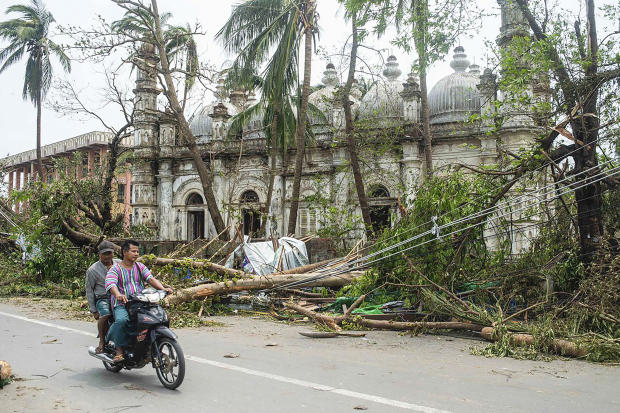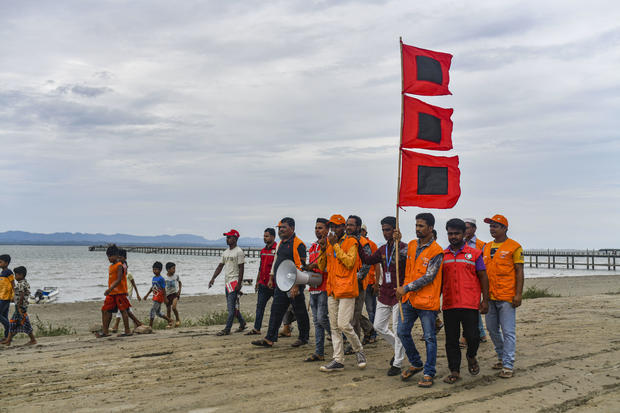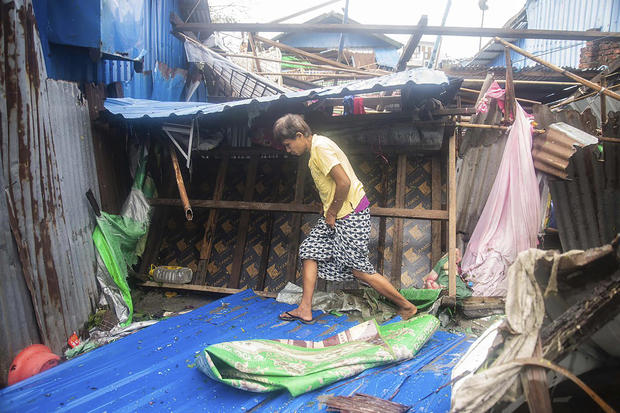Cyclone Mocha slams Myanmar and Bangladesh, but few deaths reported thanks to mass-evacuations
A powerful Cyclone Mocha has battered the coastlines of Myanmar and Bangladesh, but the timely evacuation of hundreds of thousands of people from low-lying areas in the two countries appeared to have prevented mass casualties on Monday.
Cyclone Mocha has been the most powerful Pacific cyclone yet this year, equivalent to a Category 5 hurricane. It made landfall over Myanmar and Bangladesh on Sunday afternoon local time with winds gusting over 134 miles per hour and torrential rainfall.

India, which earlier fell in the predicted path of the storm, remained largely untouched. Myanmar faced the brunt of the storm's fury.
At least six people were killed in the country and more than 700 others injured despite the massive evacuation from coastal areas over the last few days.
Strong winds, heavy rains and a storm surge that brought floods destroyed hundreds of homes and shelters in Myanmar's low-lying Rakhine state, where all the deaths were reported. Myanmar's ruling military junta declared the region a natural disaster area on Monday.
More than 20,000 people were evacuated inland or to sturdier buildings like schools or monasteries around Rakhine's state capital of Sittwe alone in the days before the storm.

Videos posted on social media showed wind knocking over a telecom tower in Myanmar, and water rushing through streets and homes. Phone and internet lines remained down in some of the hardest-hit areas a day after the cyclone made landfall, hampering the flow of information and relief and rescue work.
The cyclone did not hit Bangladesh as hard as it hit Myanmar, but hundreds of homes were still destroyed in coastal areas. In Cox's Bazar, which hosts the world's largest refugee camp — home to about one million Rohingya refugees from Myanmar — strong winds toppled some shelters but it was not hit as badly as forecasters had warned that it could be, as the eye of the storm changed course before landfall.
Bangladesh's evacuation of more than 700,000 people from low-lying areas appeared to have worked, preventing a possible large-scale loss of life. Not a single death was reported until Monday evening local time.
While the full impact of the cyclone was still unclear, given the downed communications lines in many parts of Myanmar and Bangladesh, only a handful of injuries were reported in Bangladesh.

The cyclone weakened into a tropical depression and then into a Low Pressure Area (LPA) on Monday, posing no further threat.
Bangladesh, Myanmar and the east coast of India have faced cyclonic storms regularly over the past few decades. In 2020, at least 80 people were killed and dozens of homes destroyed as Cyclone Amphan tore through India and Bangladesh. In 2008, Cyclone Nargis hit the southern coastal regions of Myanmar, killing almost 140,000 people and affecting communities of millions living along the Irrawaddy Delta.
Scientists have linked an increased frequency of cyclonic storms in the Bay of Bengal with changing weather patterns and climate change.
- In:
- India
- tropical cyclone
- Myanmar
- Asia
- Bangladesh
Disclaimer: The copyright of this article belongs to the original author. Reposting this article is solely for the purpose of information dissemination and does not constitute any investment advice. If there is any infringement, please contact us immediately. We will make corrections or deletions as necessary. Thank you.







